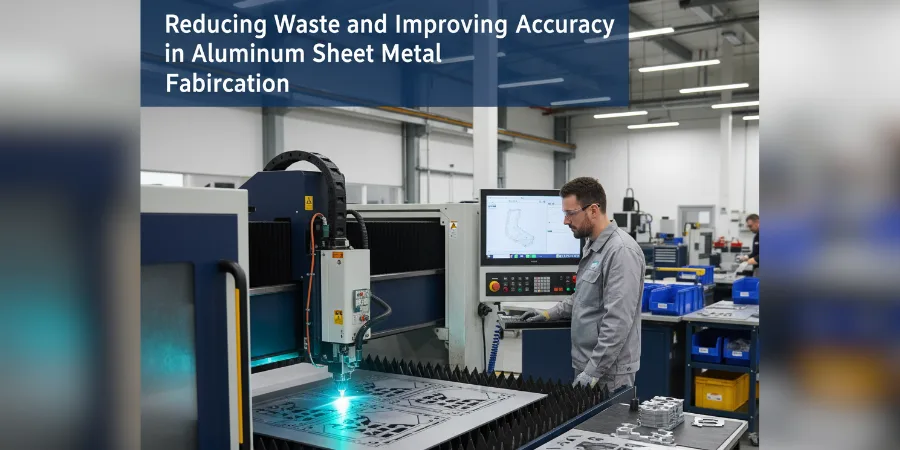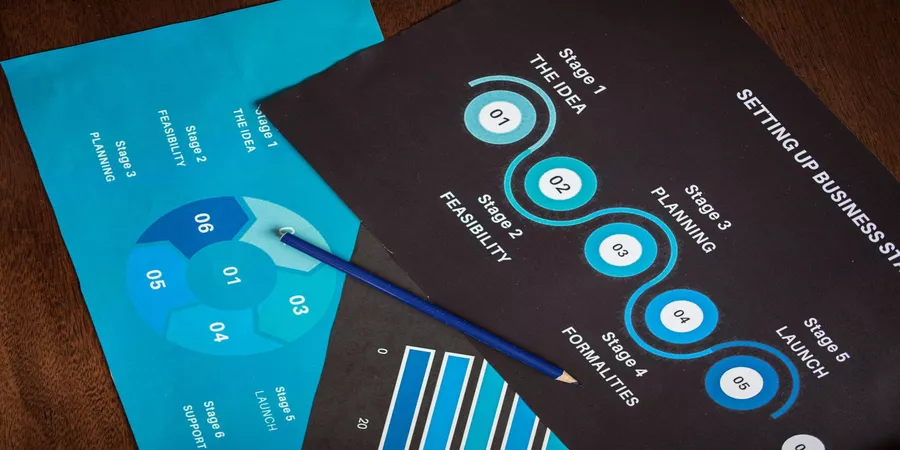Aluminum sheet metal fabrication is a cornerstone of modern manufacturing, prized for its excellent strength-to-weight ratio, corrosion resistance, and formability. From aerospace components to consumer electronics enclosures, aluminum parts are everywhere. However, the fabrication process itself is not without its challenges. Material waste and dimensional inaccuracies can lead to significant cost overruns, project delays, and compromised part quality. Optimizing these processes is not just a matter of efficiency; it’s a critical business imperative.
Achieving a lean and precise manufacturing workflow requires a multi-faceted approach. It involves careful material selection, advanced cutting and forming technologies, sophisticated software for design and simulation, and rigorous quality control measures. By addressing inefficiencies at each stage, manufacturers can dramatically reduce scrap, improve part consistency, and deliver higher-quality products on time and within budget. This exploration will delve into the key strategies for minimizing waste and enhancing accuracy in the world of aluminum sheet metal fabrication.
Strategic Material Selection and Management
The journey to reduced waste begins long before the first cut is made. It starts with selecting the right aluminum alloy and managing raw materials effectively. Aluminum comes in various alloys, such as 6061, 5052, and 7075, each with distinct properties. Choosing an alloy that is well-suited for the part’s application and manufacturing process is crucial. For instance, 5052 aluminum offers excellent formability and corrosion resistance, making it ideal for complex bends, whereas 7075 provides superior strength for structural applications but can be more challenging to form. Selecting an overly strong or difficult-to-work-with alloy can lead to higher rates of cracking during forming, resulting in wasted material and time.
Proper inventory management is another critical factor. Ordering sheet sizes that are optimized for the parts being produced can significantly reduce the amount of leftover material, or “off-cuts.” Advanced nesting software plays a vital role here, arranging part layouts on a sheet to maximize material utilization. Studies have shown that effective nesting algorithms can increase material yield by 5% to 15% or more, a substantial saving when dealing with large production volumes. Furthermore, implementing a robust system for tracking and reusing off-cuts for smaller components or future jobs ensures that valuable material does not end up in the scrap bin prematurely.
The Role of Advanced Cutting Technologies
Once the material is selected, the cutting process is the first major opportunity to introduce or prevent waste and inaccuracy. Traditional methods can be less precise, but modern technologies offer remarkable control. Laser cutting and waterjet cutting are two of the most effective methods for fabricating aluminum sheets with high precision.
Laser cutters use a focused beam of light to melt, burn, or vaporize material, creating clean, sharp edges with minimal heat-affected zones (HAZ). This precision reduces the need for secondary finishing operations, saving time and labor. Waterjet cutting, on the other hand, uses a high-pressure stream of water mixed with an abrasive substance to erode the material. A key advantage of waterjet cutting is that it is a cold-cutting process, meaning it introduces no thermal stress or distortion to the aluminum. This is particularly important for heat-sensitive alloys or parts with very tight tolerances. For a company like Rapid Axis, leveraging these advanced technologies is fundamental to delivering parts that meet stringent client specifications while minimizing scrap.
The accuracy of these machines, often within tolerances of ±0.005 inches, means that parts are cut correctly the first time. This high degree of repeatability is essential for ensuring consistency across large production runs, eliminating the waste associated with producing out-of-spec components.
Precision in Forming and Bending
Forming is where a two-dimensional sheet is transformed into a three-dimensional part. This stage is highly susceptible to errors like cracking, wrinkling, and springback—the tendency of a material to return to its original shape after bending. Mitigating these issues requires a deep understanding of material properties and the use of sophisticated equipment.
Modern CNC (Computer Numerical Control) press brakes are instrumental in achieving accurate bends. These machines use computer-controlled rams and backgauges to ensure each bend is performed at the precise angle and location specified in the design file. Several factors contribute to a successful bend:
- Bend Radius: Selecting an appropriate inside bend radius is critical. A radius that is too small for the material thickness and type can cause cracking on the outer surface.
- K-Factor: This value represents the ratio of the neutral axis to the material thickness and is essential for calculating the correct flat pattern layout. Inaccurate K-factor calculations are a common source of dimensional errors.
- Tooling: Using the right punch and die combination for the specific aluminum alloy and thickness ensures a clean bend and prevents damage to the part.
Design for Manufacturability (DFM) principles are also paramount. Collaborating with fabrication experts during the design phase can help identify potential forming challenges early on. A skilled partner can provide feedback on part geometry, suggesting modifications that make the component easier and more reliable to produce. This proactive approach, a core tenet for service providers like Rapid Axis, prevents costly rework and material waste down the line.
Leveraging Software and Simulation
In today’s manufacturing environment, software is as important as the physical machinery. CAD (Computer-Aided Design) and CAM (Computer-Aided Manufacturing) software form the digital backbone of the fabrication process. CAD software is used to create precise 2D and 3D models of the part, while CAM software translates these models into machine-readable instructions for cutters and press brakes.
One of the most powerful tools for reducing waste is Finite Element Analysis (FEA) simulation software. Before any metal is cut, engineers can simulate the entire forming process. This virtual testing allows them to predict how the aluminum will behave under the stress of bending. They can identify high-stress areas prone to cracking, anticipate the degree of springback, and optimize the bending sequence to prevent collisions with the machinery.
By identifying and correcting these issues in a digital environment, manufacturers can avoid the trial-and-error approach that consumes both material and machine time. Simulation ensures that the flat pattern is developed correctly from the start and that the forming process is viable, dramatically increasing the first-pass yield rate. This integration of digital tools is a hallmark of an advanced manufacturing operation. The ability to trust a manufacturing partner like Rapid Axis often comes from their proficiency in using these digital tools to guarantee outcomes.
Quality Control as a Waste Reduction Tool
Rigorous quality control (QC) is not just a final step; it is an ongoing process that serves as a powerful waste reduction strategy. By catching deviations early, manufacturers can prevent the continued production of faulty parts. In-process inspection—measuring and verifying components at various stages of fabrication—is far more effective than only inspecting the final product.
Modern QC methods employ advanced metrology tools like Coordinate Measuring Machines (CMMs) and 3D laser scanners. These devices can measure a part’s geometry with incredible accuracy and compare it directly to the original CAD model. Any deviation outside the specified tolerance can be immediately identified. This data provides invaluable feedback, allowing machine operators to make real-time adjustments to their processes. For instance, if a CMM detects that a bend angle is consistently off by half a degree, the press brake operator can adjust the program to compensate for springback. Without this feedback loop, an entire batch of parts could be produced incorrectly, leading to massive amounts of scrap. Establishing a culture of quality, where every team member is responsible for accuracy, is essential. When a company like Rapid Axis commits to quality, it is also implicitly committing to efficiency and waste reduction.
Final Analysis
Reducing waste and improving accuracy in aluminum sheet metal fabrication is an achievable goal that yields significant returns. It is not about a single solution but rather a holistic commitment to precision at every stage of the manufacturing process. From the initial choice of material and smart inventory management to the deployment of advanced cutting and forming technologies, every step offers an opportunity for optimization.
The integration of sophisticated software for design, nesting, and simulation allows manufacturers to move from a reactive to a proactive mode, solving problems digitally before they result in physical waste. Finally, a culture of robust, in-process quality control acts as the ultimate safeguard, ensuring that deviations are caught and corrected early. By embracing these principles, fabricators can not only reduce their environmental footprint and material costs but also enhance their reputation for delivering high-quality, precise components that meet the demanding standards of modern industry.







